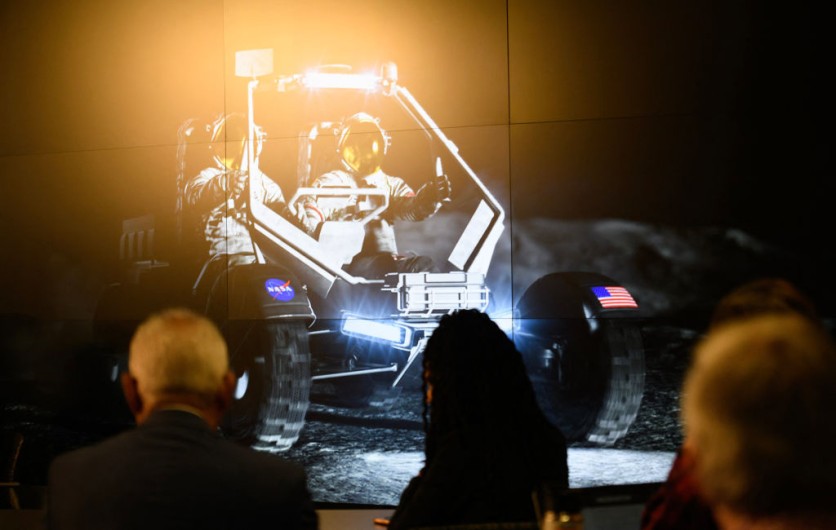US authorities expressed concern about China's fast space advancements, which might challenge US space dominance solidified by the Apollo 11 moon landing in 1969.
At the 39th Space Symposium on Tuesday (Apr. 9), US authorities noted China's recent actions as a purposeful endeavor to rise in space dominance, as reported by Space.com.
US Space Command Chief General Stephen Whiting noted China's rapid advancement in intelligence, surveillance, and reconnaissance satellites during 2018. Whiting worried about China's Pacific Ocean "kill web" to identify and attack US and allied military assets.
US' Space Rivals Pose Threat
In addition to monitoring, China employs kinetic hit-to-kill and co-orbital anti-satellite (ASAT) systems, according to Whiting. China demonstrated its ASAT capabilities in 2007 when it destroyed a meteorological satellite, resulting in debris in Earth's orbit.
Whiting also emphasized Russia's space aggression, citing ASAT tests and satellite expansions. Both countries' efforts indicate a strategic move toward space warfare.
US officials stressed the importance of aggressive space technology leadership. Troy Meink of the National Reconnaissance Office underscored reconnaissance satellite innovation and resilience, while Heidi Shyu of the Department of Defense addressed space capability diversification.
"Our competitors are actively seeking ways to threaten our capabilities, and we see this every day," Meink noted.
Officials hope for peaceful settlements despite rising tensions. Whiting emphasized the US Space Command's commitment to averting space wars and the harm it does to US and global interests.
This update comes after Chinese researchers found an essential defect in NASA's hypersonic aerodynamics modeling software. According to Interesting Engineering, they found NASA's Langley Research Center's Vulcan-CFD software failing to replicate hypersonic vehicle surfaces' complex chemistry at high speeds.

A mock-up of the the LTV (Lunar Terrain Vehicle) is shown on a screen during a news conference to announce the new vehicle which will help Artemis astronauts explore the Moon on future missions, at the Johnson Space Center in Houston, Texas, on April 3, 2024.
According to experts from the National University of Defense Technology Hypersonic Technology Laboratory, Vulcan-CFD may produce inaccurate results, especially in high-temperature ablation simulations.
The peer-reviewed study published in Acta Aerodynamica Sinica highlighted the difficulties of predicting chemical reactions at speeds greater than Mach 5. At high speeds, aircraft-air friction creates severe temperatures that may ionize air molecules and cause chemical reactions. Failure to appropriately predict these events might hinder hypersonic vehicle development.
Moreover, the study by Chinese experts warns that faulty modeling may cause aircraft surface degradation and changes in air temperature or density, potentially compromising safety and performance.
NASA's Vulcan-CFD uses sophisticated computational fluid dynamics to simulate compressible and turbulent Navier-Stokes flows. The US Space Agency designed the software to simulate complicated finite-rate chemistry and thermodynamic non-equilibrium processes, but current findings question its ability to simulate hypersonic flight.
White House Mandates NASA to Establish New Lunar Time Zone
Meanwhile, in response to changing space exploration dynamics, the White House has ordered NASA to create a new lunar time zone amid the intensifying current space race between the US, China, Japan, India, and Russia, per a previous TechTimes report.
The policy document describes NASA's development of Coordinated Lunar Time (LTC), the official time standard for future lunar missions. By 2026, NASA must have established LTC.
LTC implementation requires cooperation between the US Departments of Commerce, Defense, State, and Transportation. The measure emphasizes international collaboration, particularly with Artemis Accord members. The 2020 Artemis Accords propose space exploration guidelines for 37 countries, excluding China and Russia.
As Moon and Mars missions rise, Office of Science and Technology Policy Deputy Director for National Security Steve Welb emphasizes the need for uniform time standards for space operations.


![Apple Watch Series 10 [GPS 42mm]](https://d.techtimes.com/en/full/453899/apple-watch-series-10-gps-42mm.jpg?w=184&h=103&f=9fb3c2ea2db928c663d1d2eadbcb3e52)


